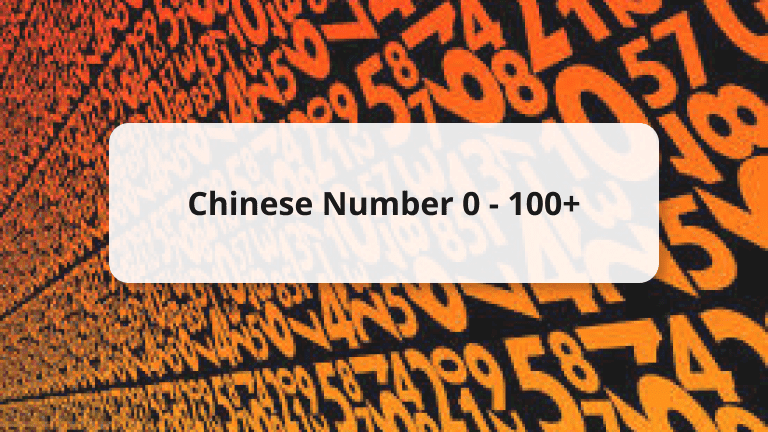The Chinese language is notorious for being challenging when it comes to speaking, but what about the Chinese numbers?Learning the numbers are an unavoidable part of everyday life. Knowing how to ask someone the time or even how to answer administrative questions like how old you are or how many years of experience you have in a certain field will help immensely in your journey to fluency.
Luckily for you, all the information you’ll need to get by is in this article. Learn how to count up to a trillion (1 000 000 000 000) with audio guides, quizzes and number-related content like time, ordinals and even numerical slang terms.
Chinese Numbers 0 to 100 Table
| Number | Character | Pinyin |
|---|---|---|
| 1 | 一 | Yī |
| 2 | 二 | Èr |
| 3 | 三 | Sān |
| 4 | 四 | Sì |
| 5 | 五 | Wǔ |
| 6 | 六 | Liù |
| 7 | 七 | Qī |
| 8 | 八 | Bā |
| 9 | 九 | Jiǔ |
| 10 | 十 | Shí |
| 11 | 十一 | Shí Yī |
| 12 | 十二 | Shí èr |
| 13 | 十三 | Shí sān |
| 14 | 十四 | Shí sì |
| 15 | 十五 | Shí wǔ |
| 16 | 十六 | Shí liù |
| 17 | 十七 | Shí qī |
| 18 | 十八 | Shí bā |
| 19 | 十九 | Shí jiǔ |
| 20 | 二十 | Èr shí |
| 21 | 二十一 | Èr shí yī |
| 22 | 二十二 | Èr shí èr |
| 23 | 二十三 | Èr shí sān |
| 24 | 二十四 | Èr shí sì |
| 25 | 二十五 | Èr shí wǔ |
| 26 | 二十六 | Èr shí liù |
| 27 | 二十七 | Èr shí qī |
| 28 | 二十八 | Èr shí bā |
| 29 | 二十九 | Èr shí jiǔ |
| 30 | 三十 | Sān shí |
| 31 | 三十一 | Sān shí yī |
| 32 | 三十二 | Sān shí èr |
| 33 | 三十三 | Sān shí sān |
| 34 | 三十四 | Sān shí sì |
| 35 | 三十五 | Sān shí wǔ |
| 36 | 三十六 | Sān shí liù |
| 37 | 三十七 | Sān shí qī |
| 38 | 三十八 | Sān shí bā |
| 39 | 三十九 | Sān shí jiǔ |
| 40 | 四十 | Sì shí |
| 41 | 四十一 | Sì shí yī |
| 42 | 四十二 | Sì shí èr |
| 43 | 四十三 | Sì shí sān |
| 44 | 四十四 | Sì shí sì |
| 45 | 四十五 | Sì shí wǔ |
| 46 | 四十六 | Sì shí liù |
| 47 | 四十七 | Sì shí qī |
| 48 | 四十八 | Sì shí bā |
| 49 | 四十九 | Sì shí jiǔ |
| 50 | 五十 | Wǔ shí |
| 51 | 五十一 | Wǔ shí yī |
| 52 | 五十二 | Wǔ shí èr |
| 53 | 五十三 | Wǔ shí sān |
| 54 | 五十四 | Wǔ shí sì |
| 55 | 五十五 | Wǔ shí wǔ |
| 56 | 五十六 | Wǔ shí liù |
| 57 | 五十七 | Wǔ shí qī |
| 58 | 五十八 | Wǔ shí bā |
| 59 | 五十九 | Wǔ shí jiǔ |
| 60 | 六十 | Liù shí |
| 61 | 六十一 | Liù shí yī |
| 62 | 六十二 | Liù shí èr |
| 63 | 六十三 | Liù shí sān |
| 64 | 六十四 | Liù shí sì |
| 65 | 六十五 | Liù shí wǔ |
| 66 | 六十六 | Liù shí liù |
| 67 | 六十七 | Liù shí qī |
| 68 | 六十八 | Liù shí bā |
| 69 | 六十九 | Liù shí jiǔ |
| 70 | 七十 | Qī shí |
| 71 | 七十一 | Qī shí yī |
| 72 | 七十二 | Qī shí èr |
| 73 | 七十三 | Qī shí sān |
| 74 | 七十四 | Qī shí sì |
| 75 | 七十五 | Qī shí wǔ |
| 76 | 七十六 | Qī shí liù |
| 77 | 七十七 | Qī shí qī |
| 78 | 七十八 | Qī shí bā |
| 79 | 七十九 | Qī shí jiǔ |
| 80 | 八十 | Bā shí |
| 81 | 八十一 | Bā shí yī |
| 82 | 八十二 | Bā shí èr |
| 83 | 八十三 | Bā shí sān |
| 84 | 八十四 | Bā shí sì |
| 85 | 八十五 | Bā shí wǔ |
| 86 | 八十六 | Bā shí liù |
| 87 | 八十七 | Bā shí qī |
| 88 | 八十八 | Bā shí bā |
| 89 | 八十九 | Bā shí jiǔ |
| 90 | 九十 | Jiǔ shí |
| 91 | 九十一 | Jiǔ shí yī |
| 92 | 九十二 | Jiǔ shí èr |
| 93 | 九十三 | Jiǔ shí sān |
| 94 | 九十四 | Jiǔ shí sì |
| 95 | 九十五 | Jiǔ shí wǔ |
| 96 | 九十六 | Jiǔ shí liù |
| 97 | 九十七 | Jiǔ shí qī |
| 98 | 九十八 | Jiǔ shí bā |
| 99 | 九十九 | Jiǔ shí jiǔ |
| 100 | 一百 | Yì bǎi |
Chinese Numbers 0 to 10
These are the Chinese numbers that will benefit you the most to learn and memorize. This is because these symbols will act as the base for any number you’ll want to express. The Chinese number system follows a very watertight logical approach. Once you have these numbers down, you will have basically learned every number except for a few cases that are just as easy to learn.
Number: Zero (0) / Chinese character: 零 / Pinyin: líng
Number: One (1) / Chinese character: 一 / Pinyin: yì
Number: Two (2) / Chinese character: 二 / Pinyin: èr
Number: Three (3) / Chinese character: 三 / Pinyin: sān
Number: Four (4) / Chinese character: 四 / Pinyin: sì
Number: Five (5) / Chinese character: 五 / Pinyin: wǔ
Number: Six (6) / Chinese character: 六 / Pinyin: liù
Number: Seven (7) / Chinese character: 七 / Pinyin: qī
Number: Eight (8) / Chinese character: 八 / Pinyin: bā
Number: Nine (9) / Chinese character: 九 / Pinyin: jiǔ
Number: Ten (10) / Chinese character: 十 / Pinyin: shí
| QUIZ QUESTION 1: Which of these numbers is the answer to 15 – 8? 1. 九 2. 七 3. 十 |
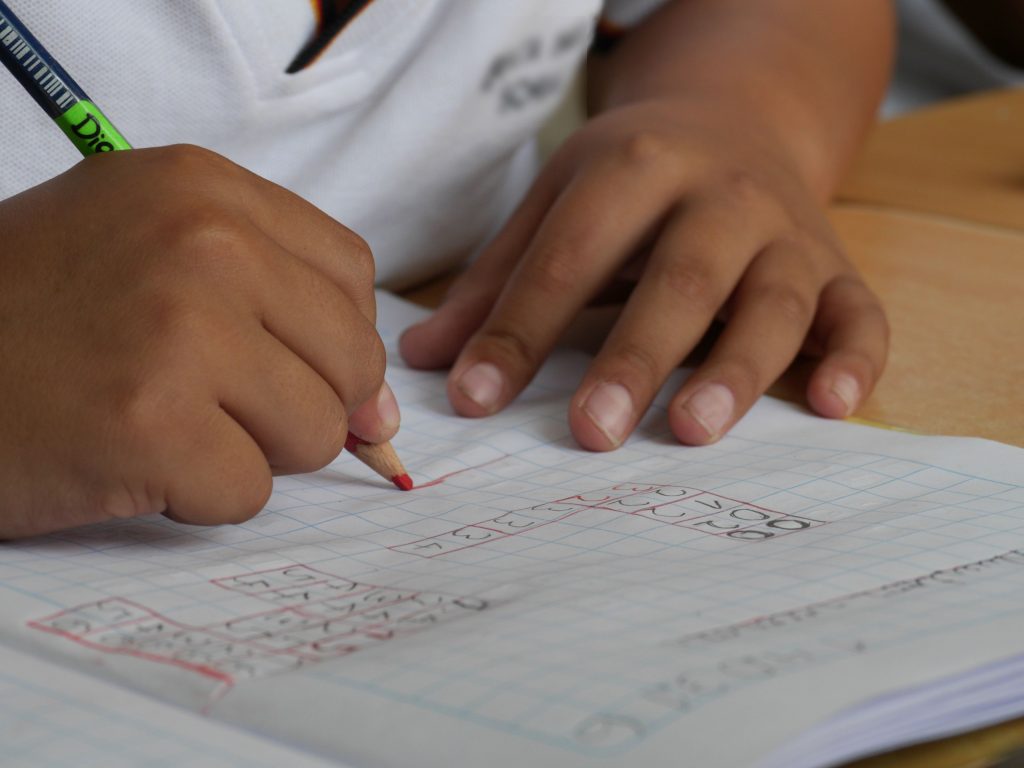
Chinese Numbers 10 to 99
The rule for numbers bigger than 10 is simple. Remember that Chinese character, 十 or shí? That symbol is very important for the following numbers. In English, you’re familiar with numerical placeholders like hundreds, tens, and units. The same applies to the Chinese number system where 十 acts as both the number 10 and the placeholder for tens, For example – if you wanted to express the number 40, you would express it as 四十 which can be read as four tens. To express a number that isn’t a perfect ten, simply add the following number at the end. In this instance, 45 is expressed as 四十五 or four tens and five.
Number: Sixteen (16) / Chinese character: 十六 / Pinyin: shí liù
Number: Twenty-four (24) / Chinese character: 二十四 / Pinyin: èr shí sì
Number: Thirty-seven (37) / Chinese character: 三十七 / Pinyin: sān shí qī
Number: Forty-eight (48) / Chinese character: 四十八 / Pinyin: sì shí bā
Number: Fifty-three (53) / Chinese character: 五十三 / Pinyin: wǔ shí sān
Number: Sixty-five (65) / Chinese character: 六十五 / Pinyin: liù shí wǔ
Number: Seventy-two (72) / Chinese character: 七十二 / Pinyin: qī shí èr
Number: Eighty-one (81) / Chinese character: 八十一 / Pinyin: bā shí yì
Number: Ninety-nine (99) / Chinese character: 九十九 / Pinyin: jiǔ shí jiǔ
| QUIZ QUESTION 2: Which of these numbers correctly expresses the value 67? 1. 十六七 2. 六十五 3. 六十七 |
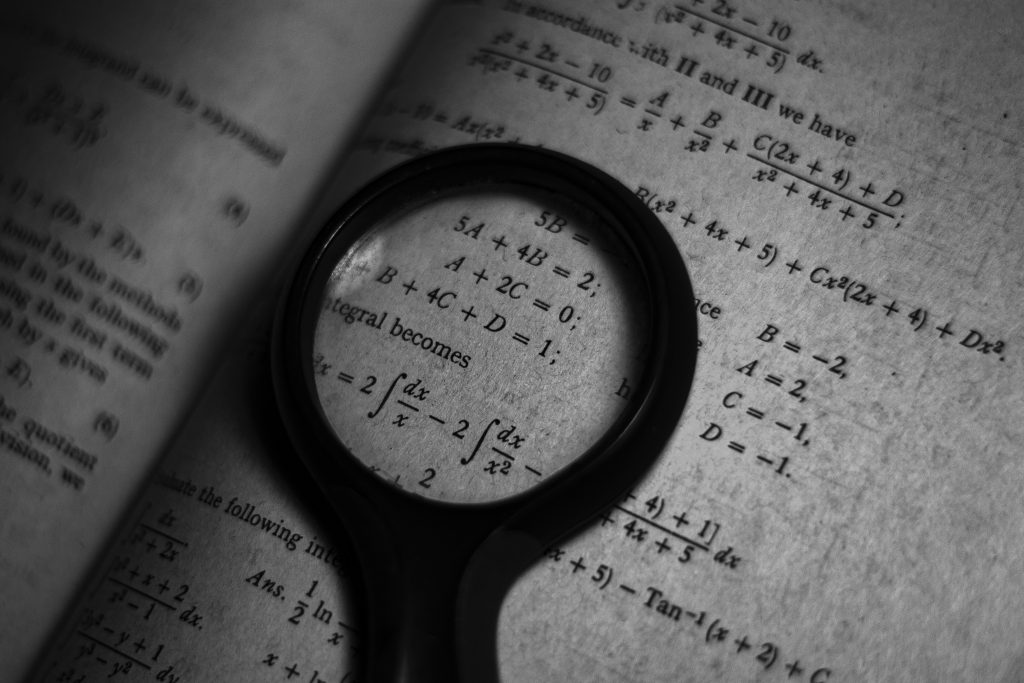
Chinese Numbers 100 to 999
Similarly to the numbers presented above, these numbers follow the number + placeholder + number format. This format gets compounded as the number gets bigger — hundreds then tens then units. However, there are two new exceptions that will benefit you to learn.
The first is the symbol 百 or bǎi which is the Chinese number hundred and also the numerical placeholder hundreds. Therefore 300 would be 三百 or sān bǎi.
The second exception is the word for two in this format. Up until now, the number two was expressed as 二 or èr and that remains the case when it is in the tens or units placeholders. When it is in the hundreds, thousands and bigger numerical placeholders, it is expressed as 两 or liǎng. So 215 would be 两百一十五.
If the number in the tens placeholder is zero, there’s no need to express the 十 because there are no tens.
Number: One hundred (100) / Chinese character: 一百 / Pinyin: yì bǎi
Number: Two hundred and nine (209) / Chinese character: 两百零九 / Pinyin: liǎng bǎi líng jiǔ
Number: Three hundred and twelve (312) / Chinese character: 三百一十二 / Pinyin: sān bǎi yì shí èr
Number: Four hundred and twenty-five (425) / Chinese character: 四百二十五 / Pinyin: sì bǎi èr shí wǔ
Number: Five hundred and thirty-six (536) / Chinese character: 五百三十六 / Pinyin: wǔ bǎi sān shí liù
Number: Six hundred and forty-nine (649) / Chinese character: 六百四十九 / Pinyin: liù bǎi sì shí jiǔ
Number: Seven hundred and fifty-two (752) / Chinese character: 七百五十二 / Pinyin: qī bǎi wǔ shí èr
Number: Eight hundred and sixty-seven (867) / Chinese character: 八百六十七 / Pinyin: bā bǎi liù shí qī
Number: Nine hundred and ninety-eight (998) / Chinese character: 九百九十八 / Pinyin: jiǔ bǎi jiǔ shí bā
| QUIZ QUESTION 3 Which of these numbers correctly expresses the 299? 1. 二百九十九 2. 二百九九十 3. 兩百九十九 |

Chinese Numbers 1,000 & Above – the Big Numbers
These symbols and words, while not likely used in everyday life, are good to have on hand. If fluency is your goal then these words will help you.
Number: One thousand (1,000)/ Chinese character: 一千 / Pinyin: yì qiān
Number: Ten-thousand (10,000) / Chinese character: 一万 / Pinyin: yì wàn
Number: One million (1,000,000) / Chinese character: 一百万 / Pinyin: yì bǎi wàn
Number: One billion (1,000,000,000) / Chinese character: 一十亿 / Pinyin: yì shí yì
Number: One trillion (1,000,000,000,000) / Chinese character: 一兆 / Pinyin: yì zhào
| QUIZ QUESTION 4 Which of these values accurately expresses three trillion? 1. 三兆 2. 三百万 3. 兩兆 |
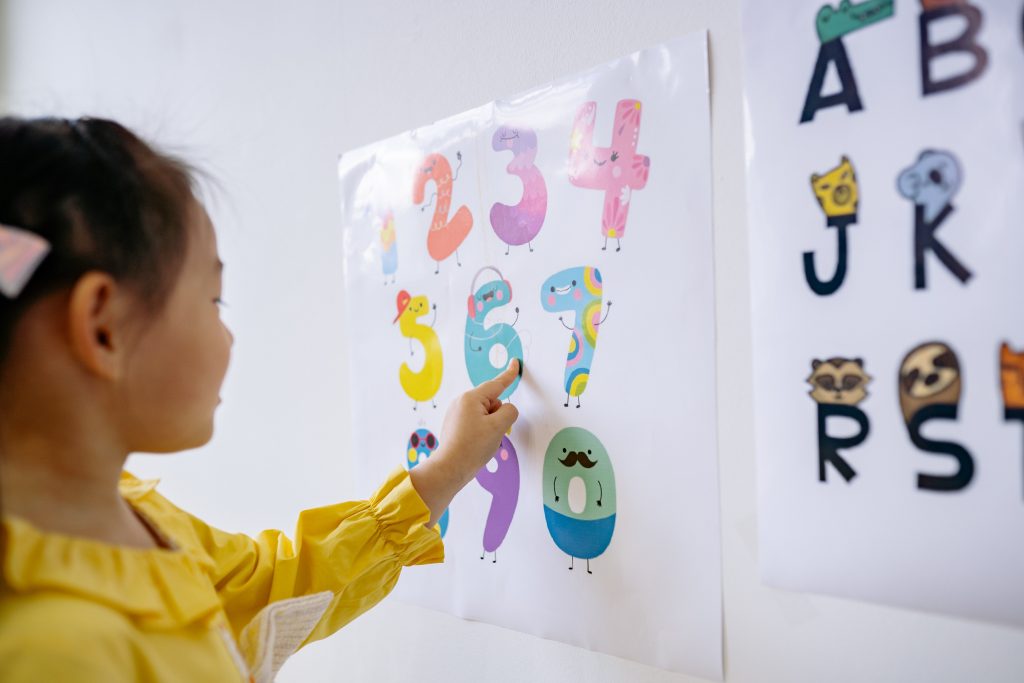
Chinese Numbers: 4 digits instead of 3
Unlike in English, where commas are placed in a number to digit group 3 units, the Chinese number system places commas to groups of four digits. With this knowledge, it will be easier for you to be able to decipher large numbers into smaller sections that you can easily read. Due to this distinction, numbers are pronounced differently in Chinese.
- 12,621
In English, this number would be written as 12,621 and therefore pronounced twelve thousand, six hundred and twenty-one.
In Chinese, the number would be written as 12,621 and therefore pronounced as one ten thousand ( 一万 ), two thousand ( 两千 ), six hundred ( 六百 ) and twenty-one ( 二十一 ).
The whole number would read as 一万两千六百 二十一
- 3,056,211
This number would then be written as 3,056,211 and expressed as three millions ( 三百万 ), five ten-thousands ( 五万 ), six thousands ( 六千 ), two hundreds ( 两百 ) and eleven ( 十一 ).
The whole number would read as 三百万五万六千两百十一
- 4,000,098,126
This number would be written as 4,000,098,126 and expressed as 4 billions ( 四十亿 ), zero ( 零 ), 9 ten-thousands ( 九万 ), 8 thousands ( 八千 ), 1 hundred ( 一百 ) and twenty-six (二十六 ).
The whole number would read as 四十亿零九万八千一百二十六
| QUIZ QUESTION 5 What is the correct corresponding symbol for the 5 (五) in this number: 38541? 1. 万 2. 百 3. 十亿 |

Chinese Ordinal Numbers
In order to express the order of something in a sequence using the Chinese number system, the symbol 第 or dì is placed before the number.
| Ordinal Number | Chinese character | Pinyin |
| First (1st) | 第一 | dì yì |
| Second (2nd) | 第二 | dì yì |
| Third (3rd) | 第三 | dì sān |
| Fourth (4th) | 第四 | dì sì |
| Fifth (5th) | 第五 | dì wŭ |
Chinese Numbers: Difference between 二 (èr) and 兩 (liǎng)
The number two is a special case in the Chinese number system for several reasons. First and foremost, there are two ways to express it! These, however, aren’t interchangeable and have very concrete rules about which instances to use them.
The number two can be expressed as èr or liǎng.
- (èr) is used when expressing numbers that have the number two in the tens and units numerical placeholders as well as in an ordinal context.
e.g. 23 – 二十三 / 82 – 八十二
- (liǎng) is used when expressing numbers with the number two is being used as a measurement of quantity or to express “both” things.
e.g. two months (兩個月)
- (liǎng) is also used as the first digit in a number with a placeholder larger than ten such as hundred or thousand. If the word ends in a 2 or has a 2 in the tens, then (èr) is used.
e.g. 252 – 兩百五十二
| QUIZ QUESTION 6: Which of these options correctly express the number 27? 1. 二十七 2. 兩十七 3. 二七十 |
Chinese Numbers: Dates in Chinese

With the base knowledge of the numbers, it’s really easy to grasp how to express the year, months, days and date in Chinese.
Years
The year is expressed digit-by-digit then the word 年 (nián).
e.g. 1975 – 一九七五年 (yi jiu qi wu nian)
Months
To say month, you simply need to know the word 月 (yuè). If your goal is to say a particular month, simply add the corresponding month’s number to the word.
e.g. September (9th month) – 九月 (jiŭyuè)
Date
If you want to say what the date is in Chinese, you should know the terms 日 (rì) or 号 (hào). If you want to say the sixth day of the month, you would say it as 六号 (liù hào).
With all these elements, saying the date is easy – simply combine the month with the day.
e.g. July 15 – 七月十五号 (qī yuè shí wǔ hào)
Chinese: 星期一 / Pinyin: xīngqī yī / English: Monday
Chinese: 星期二 / Pinyin: xīngqī èr / English: Tuesday
Chinese: 星期三 / Pinyin: xīngqī sān / English: Wednesday
Chinese: 星期四 / Pinyin: xīngqī sì / English: Thursday
Chinese: 星期五 / Pinyin: xīngqī wŭ / English: Friday
Chinese: 星期六 / Pinyin: xīngqī liù / English: Saturday
Chinese: 星期天 / Pinyin: xīngqī tiān / English: Sunday
| QUIZ QUESTION 7: On Wednesday, you get asked by a friend if you want to go for lunch in two days from now. On what day will you and your friend be meeting up? 1. 星期四 2. 星期天 3. 星期五 |
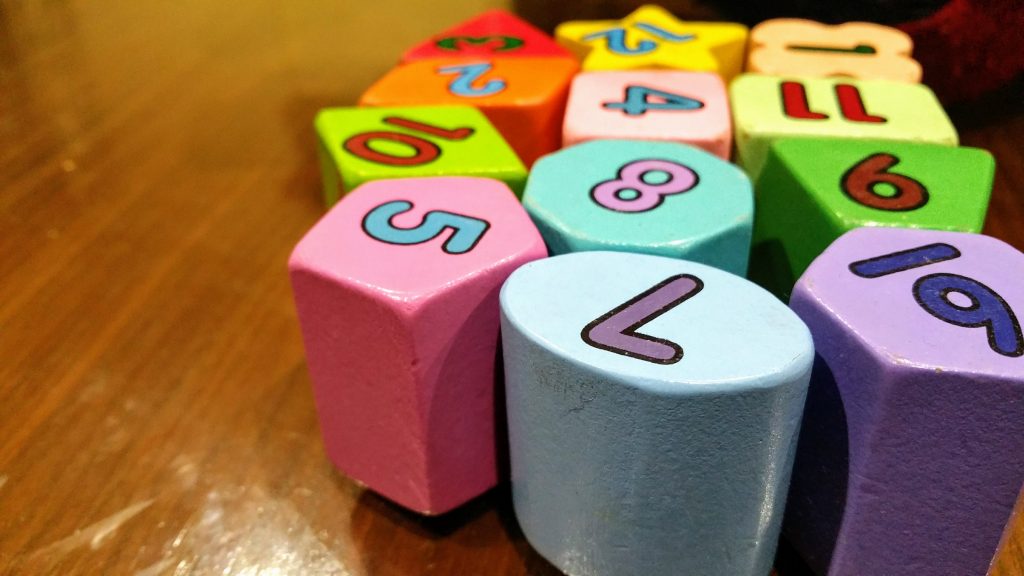
Chinese Numbers: Tell Time in Chinese
Telling time in Chinese is another one of the elements of this language that isn’t challenging. It’s important before knowing how to tell time to familiarise yourself with the key terms in this sector of communication in the event that you need to think quickly for yourself. Knowing these terms also helps improve your fluency.
The format
Just like with English, the Chinese system for time uses the 24 hour format. The first 12 used to express the AM (上午 – shàng wǔ) and the remaining 12 for the PM (下午 – xià wǔ).
Key terms
In the event that you want to express the time to someone who asks you, it will help you to know how to say the following:
Hours
There are two ways of communicating the hours in Chinese.
The first being the word which literally translates to “hours” which would be 小时 (xiǎo shì).
The word for hour as in “o’clock” is 点钟 (diǎn zhōng) or just 点 (diǎn) in everyday conversation. This word follows any number from 1 to 24, where two is expressed as 两 and not 二.
e.g. 7 o’clock – 七点 (qī diǎn)
Minutes
Now to further communicate time, you should know how to express the minutes in a certain time.
The word that will help you do this is 分钟 (fēn zhōng) or just 分 (fēn). This follows the hours format from above.
e.g. 7:13 – 七点十三分 (qī diǎn shì sān fēn)
Additionally, if you want to say half past or quarter past, those have their own terms — 点半 (diǎn bàn) and 一刻 (yī kè).
e.g. 7:30 – 七点半 (half past 7) / 7:15 – 七点一刻 (quarter past 7)
Seconds
To express seconds, the term 秒钟 (miǎo zhōng) or 妙 (miǎo) is used.
When expressing a numerical value with this term, the number precedes the term.
e.g. 20 seconds – 二十秒 (èr shì miǎo)
| QUIZ QUESTION 8: Someone asks you for the time and you look down at your digital watch. You see it is currently 18:27. How would you express this to the person? 1. 十八二十七分 2. 十八点二十七分 3. 六点两十七分 |

Chinese Numbers: Slang
With the advent of the internet came Chinese online communities that coined slang terms that correspond with particular numbers. They determined these Chinese expressions based on the number’s likeness to words with similar pronunciations.
- 1314
“Forever”
This numerical combination means “forever” as it is pronounced similarly to 一生一世(yī shēng yī shì) which roughly translates to whole/entire life.
- 520 (521)
“I love you”
As for this number – the numbers 五二零 (wǔ èr líng) or 五二一 (wǔ èr yī) sound phonetically similar to 我爱你 (wǒ ài nǐ) meaning I love you.
- 484
“Are you dumb?”
四八四 (sì bā sì), which is pronounced in a similar way to 是不是 (shì bù shì), is a tongue-in-cheek way to call someone stupid as means to poke fun at them.
- 7451/7456
“I’m so angry”
This number is used to express anger or irritation due to 七四五一 (qī sì wǔ yī) or 七四五六 (qī sì wǔ liù) sounding like 气死我了 (qì sǐ wǒ liǎo) which roughly translates to I’m furious.
- 666
“Good job”
In the English-speaking world this number (六六六 – liù liù liù) is negatively connotated, often associated with bad omens or things of the sort. The opposite is true for the online Chinese-speaking world though. Sounding phonetically similar to 溜溜溜 (liū liū liū), a remark gamers would send each other to acknowledge something that they found impressive.
- 995
“Save me”
The number 九九五 (jiǔ jiǔ wǔ) is pronounced similarly to 救救我 – jiù jiù wǒ and online Chinese speakers use this to jokingly say “save me” to each other.
| QUIZ QUESTION 9: Which number would you use online when trying to express your affections to your significant other? 1. 520 2. 555 3. 484 |
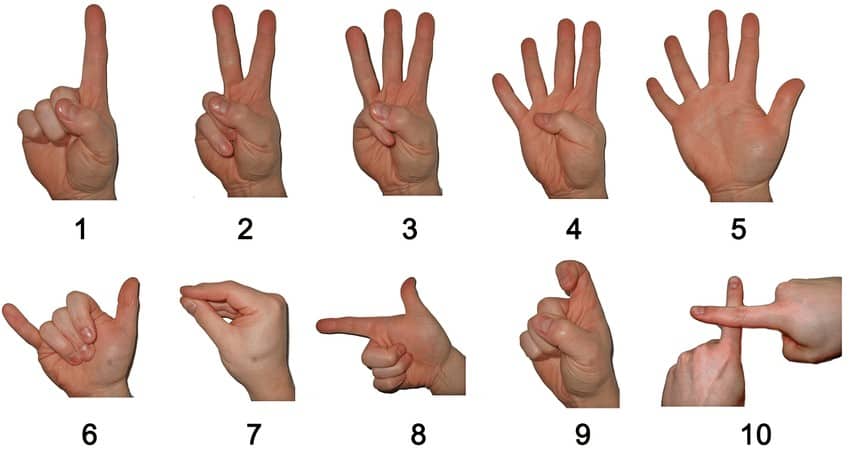
Chinese Numbers: Counting with Fingers
The coolest part about the Chinese numerical system is the simple way to represent the numbers with easy hand gestures. What’s so easy about them, you ask? Well, you only need one hand when using them – yes, even for numbers bigger than five!
Native English speakers are used to using two hands when counting from 6 to 10, but with the Chinese number system, that’s rarely necessary except for the number 10 which in certain regions is expressed by creating 十 with both index fingers.
With this knowledge and the visual chart above, you’ll be mastering Chinese finger counting in no time at all.
三, 二, 一 Are You Ready?
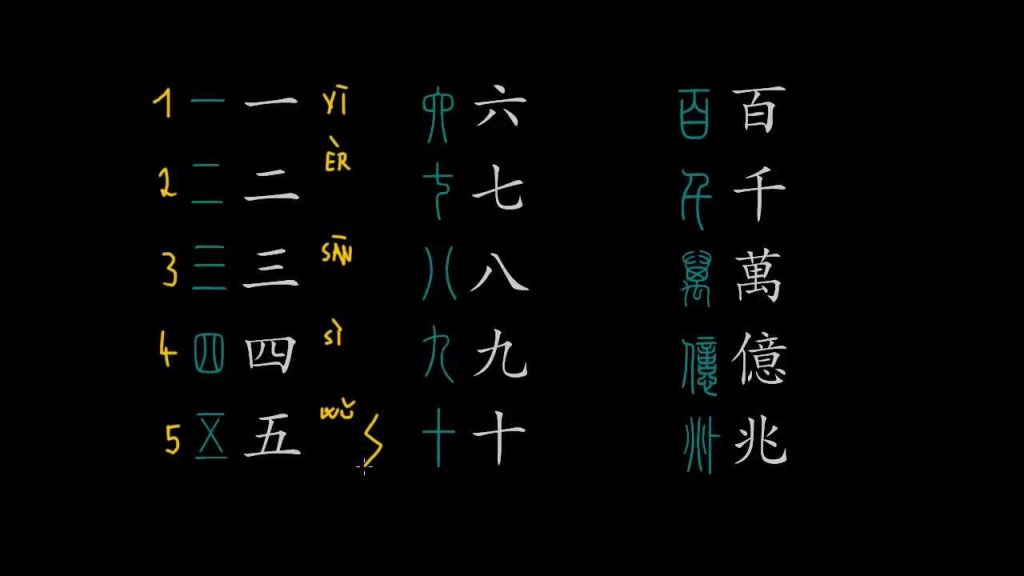
With all the aforementioned information covered in this in-depth article, you now have knowledge surrounding the Chinese numerical system. With audio assistance and visual aids, you now know more about how to tell the date, how to sort items in numerical order and see how long it takes to count to a million.
Don’t be shy to check out other language articles like Japanese numbers or Telling Time in Korean!
While you’re here, make sure to check out the language courses provided by AmazingTalker to equip yourself with the tools to improve your fluency in a range of languages.
QUIZ ANSWERS
- 2
- 3
- 3
- 1
- 2
- 1
- 3
- 2
- 1
